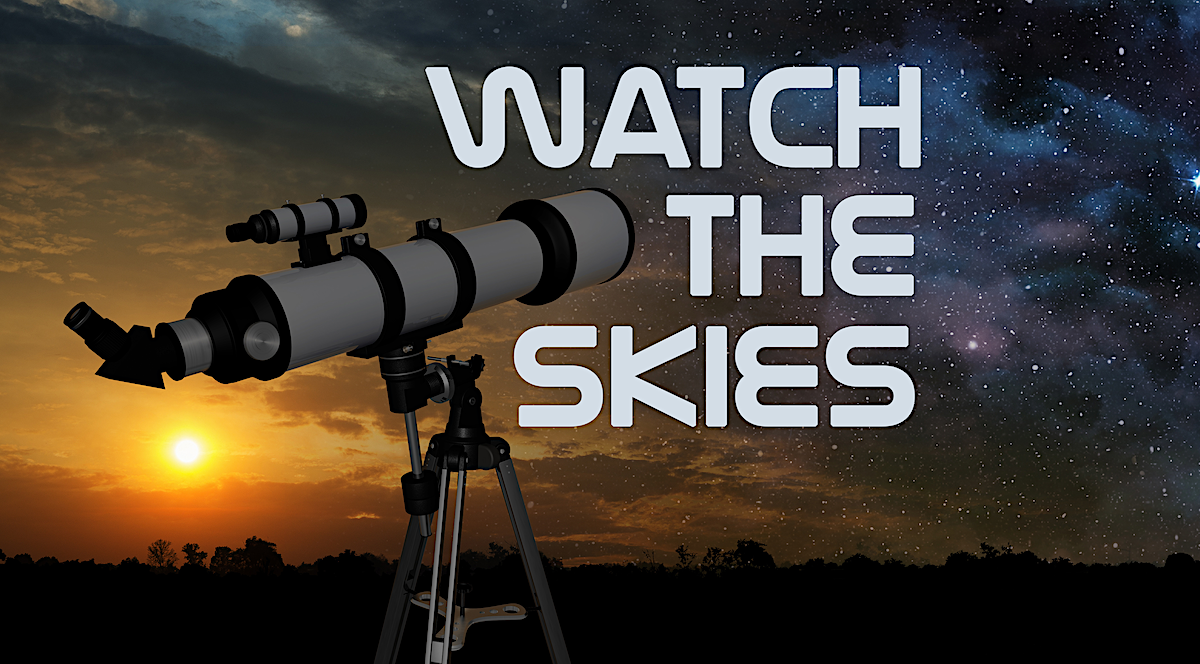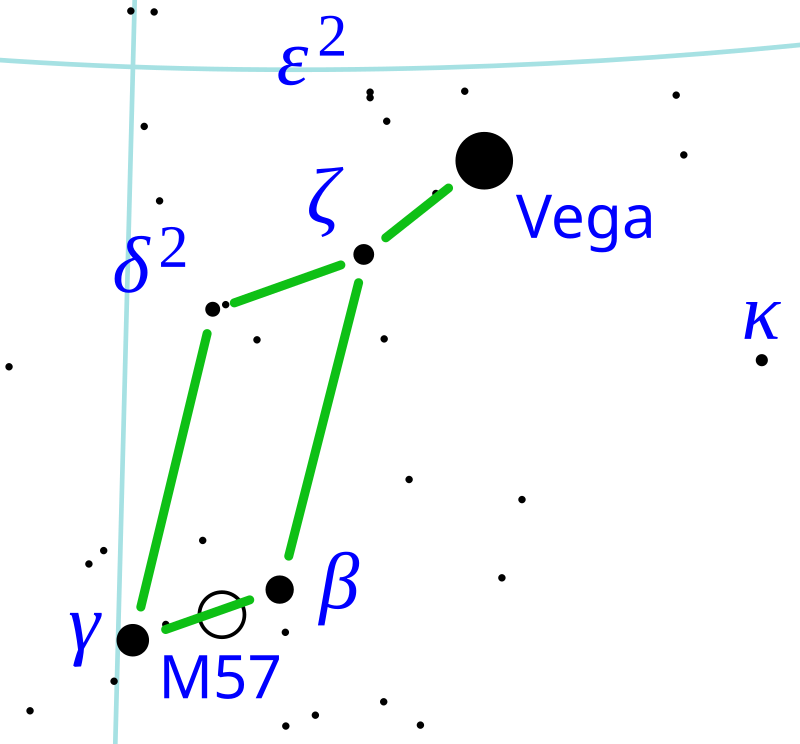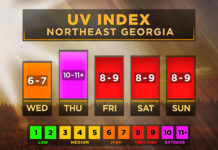
Welcome to yet another week of watching the skies! We’ll have a few clouds to fight off towards the first of the week but by Wednesday and Thursday we will have a much better chance of some good star gazing weather.
The Planets This Week: Venus remains the highlight of the planets shining brightly in the evening twilight. It passed through the Beehive Cluster over the weekend and remains fairly close to it after sunset this week. It is drawing closer to Mars which can be found just above and to the left. They will be drawing closer to each other over the next week and appear closest next Monday evening. Jupiter and Saturn both appear high in the sky during the late-night and pre-dawn hours. The dimmer planets of Uranus and Neptune, both only visible in telescopes or binoculars, are both up during the pre-dawn hours as well.
Naked Eye Object-Venus: This week’s naked eye object is one of the brightest in the sky. Venus has been rising higher in the sky over the past couple months and now is impossible to miss amongst the evening twilight. Venus is the second planet from the sun and named after the Roman goddess of love and beauty. Surprisingly little is known about the inner workings of Venus, largely because of its incredibly thick atmosphere. The atmospheric pressure on the surface of Venus is equal to around 92 times that of the pressure here on Earth. The atmosphere consists of 96% carbon dioxide and temperatures at the surface run hotter than 800 degrees. As if all of these things didn’t make Venus inhospitable enough, the thick clouds that obscure the surface are comprised of sulfuric acid.
Venus’ rotation is extremely slow with a day lasting longer than a year. This results in one hemisphere being in full sunlight for a very long time and one sitting in the dark. Despite this, surface temperatures are fairly equal between the sides thanks to constant, albeit surprisingly weak, winds. The surface is dotted with active volcanoes which results in a constantly changing surface geology, though it does take considerable time to completely build a new crust. These volcanoes also cause lightning, which honestly just makes this planet even scarier. Impact craters are common, with around 1,000 detected using radar observations, but most are small due to most meteors burning up in the thick atmosphere.
One of the coolest things about Venus is that, like the moon, it has phases. Because it lies between the Earth and the Sun it goes through phases seen from our perspective. Below is a composite of the waning crescent Venus captured during 2004. When Venus is directly opposite the sun, and therefore extraordinarily difficult to observe, its atmosphere is visible reflected by sunlight.

Humans have only successfully landed four probes on Venus: the Vanera 9 and 10 missions launched by the USSR in 1975 and later Vanera 13 and 14 in 1978. Vanera 13 functioned for just over 2 hours and 14 lasted less than 1 hour. Due to the incredibly harsh conditions on the surface getting a probe to survive to landing, much less for time on the surface, is a feat in of itself.

Venus bounces back and forth between the evening and morning sky and is even visible in daylight through a pair of binoculars (though I don’t suggest ever trying this due to its proximity to the sun). Right now it appears in the evening twilight and is impossible to miss, so get out and check it out this week!
Telescope object of the week-the Ring Nebula: One of the more fascinating objects visible with a even a relatively small telescope is known as M57, or the ring nebula. Discovered by French astronomer Antoine Darquier de Pellepoix in 1779, it is one of the brighter planetary nebula in the sky. What’s a planetary nebula, you ask? It is the leftovers of a star that has gone supernova. They come in many shapes, with around 20% developing spherically and others in more of a dumbbell shaped nebula. The name “planetary nebula” comes from their appearance in early telescopes. Early astronomers weren’t entirely sure what they were, but they looked like faint gas giant planets, thus “planetary” nebula.
The Ring Nebula is a particularly brilliant example of these phenomena. It is roughly 2500 light years from Earth and located near the bright star Vega. It is fairly easy to find in amateur telescopes because it lies directly in line Lyrae beta and gamma (see star map below).

If you get some clear skies this week take a few minutes to reel this object in. It is fairly small and best seen with a telescope of at least 4″ diameter (the bigger the better). It is absolutely worth the effort to find, though.
Check back next week for more sky watching tips.
Watch the skies!








